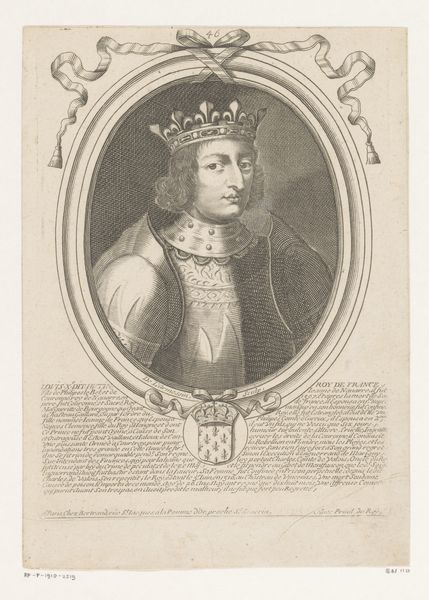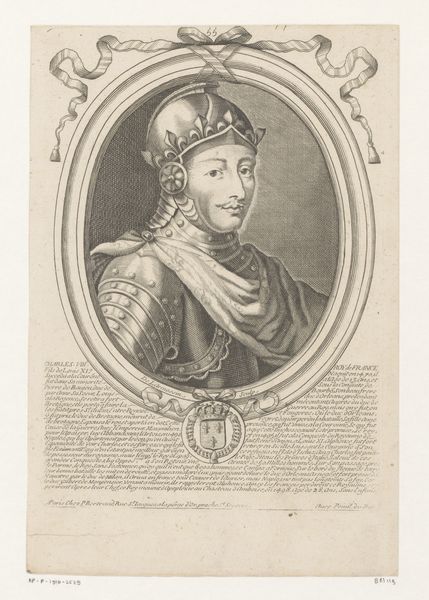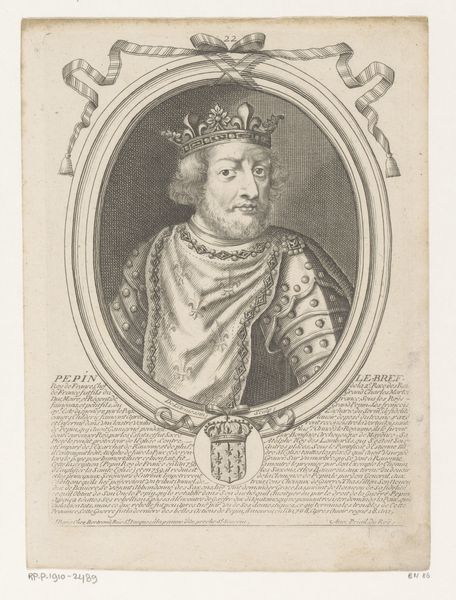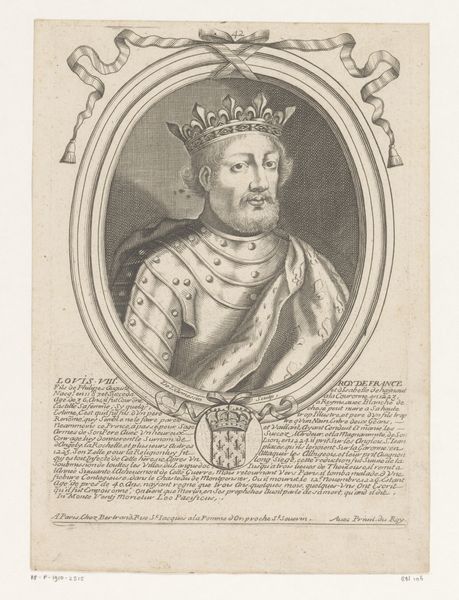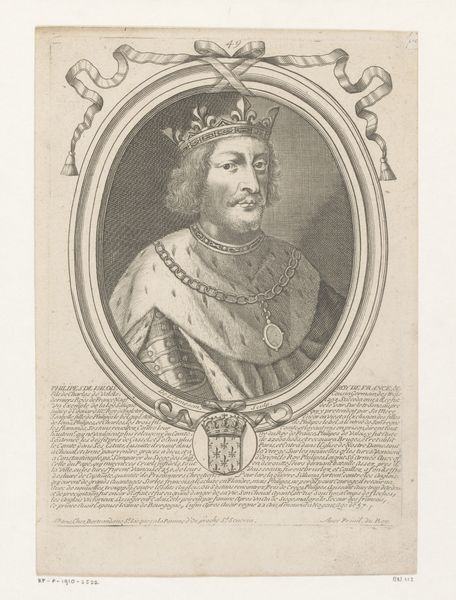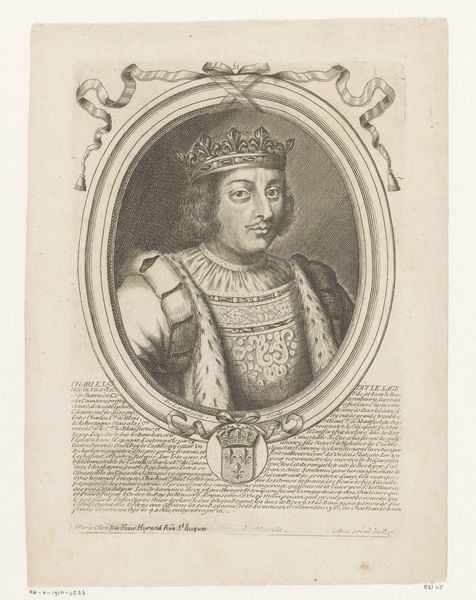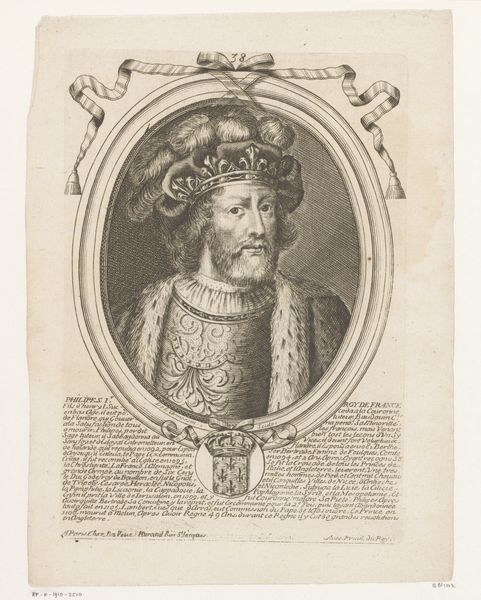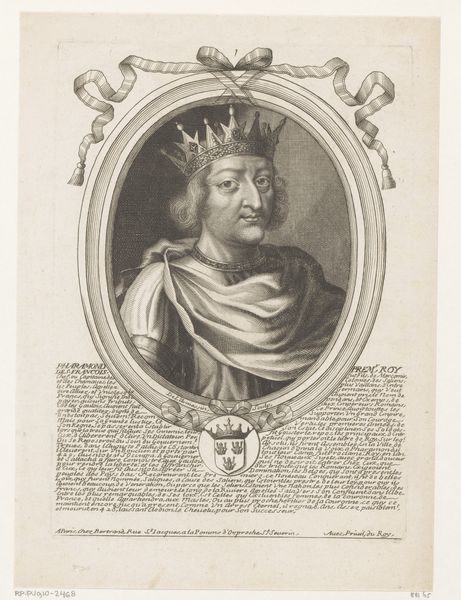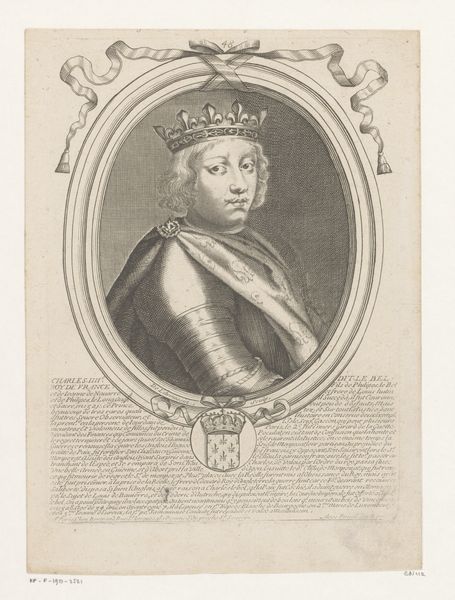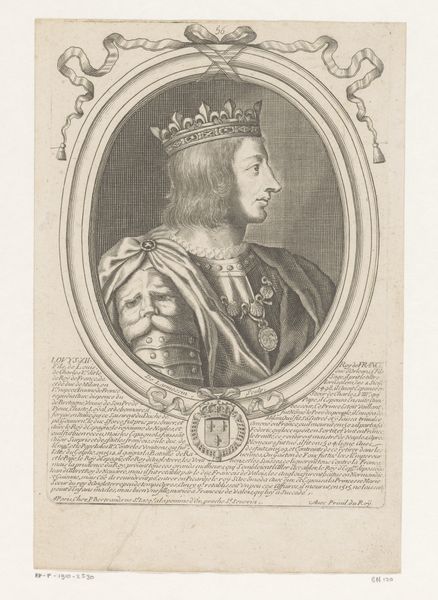
print, engraving
#
portrait
#
baroque
# print
#
old engraving style
#
history-painting
#
engraving
Dimensions: height 227 mm, width 160 mm
Copyright: Rijks Museum: Open Domain
Curator: This is a portrait of Charles VII, King of France, rendered in an engraving. The work, attributed to Nicolas de Larmessin I, dates from between 1642 and 1678. Editor: It feels surprisingly formal, even static, for a portrait from the Baroque period. All those precise lines! What was this originally made for, mass distribution? Curator: Certainly. This kind of printmaking facilitated a broader reach of royal imagery and the projection of power. Think about who would have encountered this print: the merchant class, aspiring nobles, people hungry for a tangible connection to power. Its material accessibility reconfigured social relationships to the crown. Editor: The detail in the armour and the royal regalia – the crown and the chain – really speaks to the value placed on these markers of status and material wealth. It's also interesting to consider the labor involved in creating this kind of print. How long would this have taken Larmessin? And what was the economy of printmaking like? Curator: Exactly, and considering that it is an engraving, the reproduction suggests the deliberate and methodical spread of ideology. This particular depiction reflects how Charles VII was presented to the world. This connects to broader historical themes like identity and social order during the reign. Consider also that this portrait occurred long after his reign ended in 1461; what function does a retrospective royal portrait serve? Editor: It makes me think about how prints like these helped normalize notions of hierarchy, with the King literally framed and elevated, in his armor as a material testament to protection and rule. You also see so many different qualities and labor practices in it: the high craft and aesthetic qualities of printmaking itself, with an emphasis on materials, the iron of the armor, the supposed gold in the chain. It all represents different methods of production. Curator: And even the deliberate repetition inherent in printmaking allows a mass dissemination of power dynamics to different consumers. This engraving provides us with an access point into the intersectional relationships between royal identity, economic control, and class. Editor: Agreed. Seeing it laid bare in these etched lines forces us to consider the social relations inherent in the printmaking process, and to remember the labor behind every copy distributed across the realm. Curator: A fascinating insight into the social dynamics of seventeenth century France through printed media. Editor: Absolutely, it's made me really rethink my initial read of it as "just" a royal portrait.
Comments
No comments
Be the first to comment and join the conversation on the ultimate creative platform.
